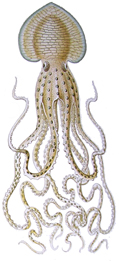
Being a Subject
Volunteering as an experiment participant
The best way to spend the next 90 minutes of your life.
 |
Being a Subject |
Volunteering as an experiment participant The best way to spend the next 90 minutes of your life. |
|
Our experiments take place on the M.I.T. main campus. Most (but not all) require you to be right-handed and a native speaker of English. Experiments pay anywhere between $10 and $20 per hour. For those who are curious, we include more specific information below. Interested parties should send email to our participant pool manager. What we are looking at: Experiments with MEG measure the magnetic signals produced by the activity of your brain. These signals are very small (on the order of femtoTesla, or 10-15). By comparison, your heartbeat produces a signal in picoTesla (10-12). The earth's magnetic field is in the order of tens of microTesla (10-6). A technology such as magnetic resonance imaging (MRI) uses magnetic fields up to 3 Tesla (a signal 3,000,000,000,000,000 stronger than the signal produced by your brain). What you should know about the technology (MEG): MEG is a passive tool for looking at magnetic activity in the brain. Unlike technologies such as functional magnetic resonance imaging (fMRI) or positron emission tomography (PET), MEG does not "put" anything into you—rather, it records the magnetic activity that your brain naturally produces. There are no known risks associated with MEG. Where this takes place: The actual experiment takes place inside a magnetically shielded room (MSR). Because magnetic signals in the brain are so small, we must do everything possible to screen out electric or magnetic noise that would interfere with recording brain signals. So experiments are conducted inside a room that is specially constructed to filter outside magnetic signals. This room is rather large (about 8' wide by 8' high by 12' long), and it contains a bed where subjects recline during testing. To learn more about the MSR, see here. Who is eligible: Most of our experiments examine language processing, so we tend to be looking for volunteers who are native English speakers. Additionally, because there are potential differences in how people's brains are organized, we prefer right-handed volunteers. Finally, many of our experiments require that you either not be farsighted or wear contact lenses to correct this farsightedness, as one must be able to read a screen close to one's face without glasses. To further reduce magnetic noise, participants can't have anything on them containing metal—no watches, earrings, or other jewelry, no eyeglasses, no braces or permanent retainers (fillings and most crowns are fine). Many types of cosmetics contain traces of iron—in particular some hair gels and coloring mousses (as well as mascara and rouge)—so makeup is also to be avoided. Finally, clothing that contains metal—notably, bras with metal underwires and shirts with metal zippers or buttons—cannot be worn in the MSR (the fly on a pair of pants is okay). If applicable, we will ask you to remove belt buckles, keys, etc. before beginning. How the experiments work: Before the experiment begins, we do two things. First, we attach five small electromagnetic markers to your head. We do this so that we can find out where exactly your head is when it is underneath the MEG sensors (this is something we can't guess about, or use a rough estimate of; the brain is very specialized, and two regions an inch apart can have very different functions). This is a painless process, and poses no danger. When these electromagnets are activated, for about 1 minute during each experiment, they are much weaker than refrigerator magnets, and slightly stronger than the magnetic signal of your heartbeat. Second, we need to trace the shape of your head. We do this for two reasons. The most important is that the algorithms we use to figure out which parts of your brain are active are relatively dumb: they don't care much if they find something inside or outside your head. We, on the other hand, assume that most of the activity in your brain actually occurs in your brain, so we use the shape of your head to constrain the algorithms. When we later try to figure out what parts of your brain are active, it is much easier to understand the results if they are situated inside something that looks like a head, rather than just floating around in space, so we also use head shapes for graphics displays. We record your head shape using special digitizing equipment. This equipment records, in 3-dimensional space, where your head is as we pass a computer stylus over it; interestingly, this equipment is also used in virtual reality technology. Once those two steps are completed, the experiment moves into the MSR. There, you will lie down while the experiment takes place. Some experiments examine language processing, and involve reading or hearing words and then making decisions about them (for example, whether they are real English words or not). Some experiments look at speech processing, and involve listening to tones and speech-like sounds; for this type of experiment, sometimes you don't have to do anything other than listen quietly, while other times you have to categorize the sounds (for example, whether the sound you heard was more like a B or a P). We also usually perform a couple short baseline tests that are used to identify where the basic visual and auditory parts of your brain are, and how their activity looks on our MEG system. These are very short and simply involve watching patterns or hearing tones. If you are interested in participating and helping advance the cause of science, contact MEGsubjects. |
|
What is MEG? • About Our System • People • Being a Subject • Getting Here • More Info |